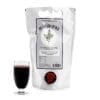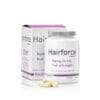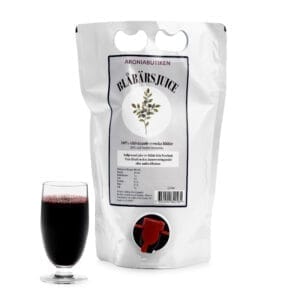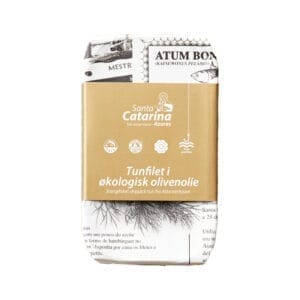- ×
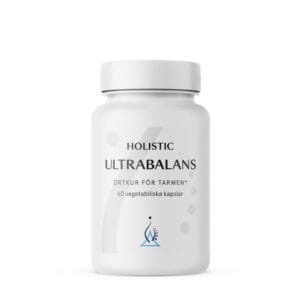 Ultrabalans 60 capsules - Holistic 1 × 339.00 kr
Ultrabalans 60 capsules - Holistic 1 × 339.00 kr
NOW L-Carnosine 500 mg 50 capsules
479.00 kr
For performance, brain protection, anti-ageing and much more.
In stock
NOW Foods L-Carnosine 500 mg 50 capsules
L-Carnosine is one of our favorite products. Almost unknown in Sweden. Very interesting in anti-aging contexts and more.
L-Carnosine in Swedish, is a water-soluble antioxidant that works together with other antioxidants such as vitamin E and zinc and enhances their effect, but it does more than that. Carnosine is sometimes called “the longevity molecule”.
Blood sugar and aging – Carnosine against AGEs
Carnosine is thought to prevent the effects of diabetes and blood sugar problems, such as neuropathy, kidney problems and eye problems like cataracts. It is thought to limit glycosylation (AGEs), which is one reason why tissues (skin, joints, vessels..) stiffen and lose their flexibility.
AGE stands for advanced glycation/lipoxation end products and is formed when carbohydrates and proteins are heated and processed. Sugar in particular reacts to this. However, AGEs are also formed spontaneously in the body. The amount of AGEs in the body is considered a marker of ageing. Carnosine is therefore also considered to be something of a beauty supplement, especially for skin elasticity.
About a century ago, the French biochemist Maillard discovered that when food was heated, non-enzymatic chemical compounds were formed. They are linked to various health problems and can accumulate in the body. The brown crust on fried food is the result of the Maillard reaction.
“Elevated levels of various AGE/ALEs in the body are observed in virtually all chronic diseases: from allergies and Alzheimer’s disease to various urogenital and eye diseases (Fact 1) [11]. Associations with dairy intake have been reported in diseases such as allergy, certain cancers such as breast, ovarian, prostate and testicular cancer, cardiovascular disease and neurodegenerative diseases such as Parkinson’s disease.”
Quote taken from: https://runnersworld.se/blogg/age-och-ale-inlagget-du-inte/
Non-enzymatic glycosylation:
– Glucose is added to free amino acids on proteins without the help of enzymes.
– The degree of non-enzymatic glycosylation is related to the amount of glucose in the blood.
– The products formed when collagen and other long-lived proteins in the vessel wall are glycosylated, over time undergo a number of chemical modifications and form AGEs.
– AGEs cross-link polypeptides and trap plasma or ECM proteins. This allows, for example, LDL to be trapped in the vessel wall of larger vessels so that cholesterol deposition there is greater, which speeds up atherogenesis.
– Cross-linking in capillaries traps plasma albumin and contributes to the thickening of their basement membranes seen in diabetic glomerulopathy.
Retrieved from: http://www.medinsikt.se/endokrinologi/diabetes-mellitus/2
Read more about how Carnosine works:
The findings of this review indicating that carnosine has anti-glycating properties, and may hinder the formation of protein carbonyls and the cross-links induced by reduced sugars;
https://pubmed.ncbi.nlm.nih.gov/29858687/
Carnosine and the processes of ageing
https://www.sciencedirect.com/science/article/abs/pii/S0378512216301347
Performance
Athletes use it to boost endurance and muscle strength (including reducing lactic acid).
Heavy metal removal
Carnosine chelates metals such as arsenic, cadmium, lead, mercury, copper and zinc. Chelation therapy can best be described as a cleansing of heavy metals in the body by having a substance bind to the metal and the body eliminates it. Chelation therapy is otherwise expensive and is mainly done with EDTA and DMSA. In the US, it is sometimes given intravenously for cardiovascular problems such as high blood pressure and vasoconstriction. Carnosine can be used for copper excess or for detoxification of other heavy metals (mercury, cadmium, etc.). Carnosine may be of interest if your hair analysis has revealed high levels of copper, or if your hair analysis has revealed other heavy metals.
Carnosine and the brain
Research suggests that Carnosine may reduce the accumulation of beta-amyloid in brain tissue, which is associated with Alzheimer’s disease. Neurologists call Carnosine a “neuroprotector” and recommend it for depression, anxiety, dementia, Alzheimer’s and Parkinson’s disease. It has also been used to treat autistic children with positive results.
Stomach problems
Carnosine can potentially have a preventive effect on stomach problems. There is a stomach medicine containing zinc and L-Carnosine (Polaprezinc).
Detoxification
It helps to eliminate aldehydes and acts preventively on alcohol damage.
Carnosine is found naturally in food
Carnosine is found naturally in food, for example in beef and salmon. It occurs naturally in the body, especially in our muscle fibers, where it acts to regulate the pH of blood and cells. Precisely because it is not a substance unknown to the body, the supplement has no side effects whatsoever – not even in children. There is a risk of getting too little in your diet, especially for low protein eaters or vegetarians.
Carnosine is a so-called dipeptide, meaning an organic compound consisting of two amino acids (histidine and beta-alanine). L-Carnosine is not the same as L-Carnitine (L-Carnitine).
Note that Carnosine may have a mild antihypertensive effect.
Feel free to search online and see what you find about L-Carnosine, “the longevity molecule”.
For example here: https://www.lifeextension.com/magazine/2016/12/carnosine
and here in Swedish: https://ensueco.com/3857-carnosin-ett-medel-med-antialdrande-effekt/
Use:
1 capsule, one to three times daily with meals.
Ingredients:
L-carnosine (ß-alanyl-L-histidine), hypromellose (cellulose capsule), stearic acid (vegetable source) and magnesium stearate (vegetable source).
50 capsules. Vegetarian capsule shell.
Related products
All products
0 - 0 reviews
209.00 kr100% blueberry juice from Norrland. Without additives.
0 - 0 reviews
67.00 krArtisanal canned fish with the finest tuna.
All products
0 - 0 reviews
149.00 krMini dry cleaning for your clothes and home textiles. Luxury!
All products
0 - 0 reviews
129.00 krHigh quality ashwagandha concentrate. 300mg/capsule.
All products
0 - 0 reviews
219.00 krAcid-neutral vitamin C with sodium ascorbate and camu camu, among others.
All products
0 - 0 reviews
10.00 krNourishing and stimulating night cream. Sample pack.
All products
0 - 0 reviews
98.00 krCharcoal and juniper toothpaste for white teeth. Fluoride-free. A bestseller!


